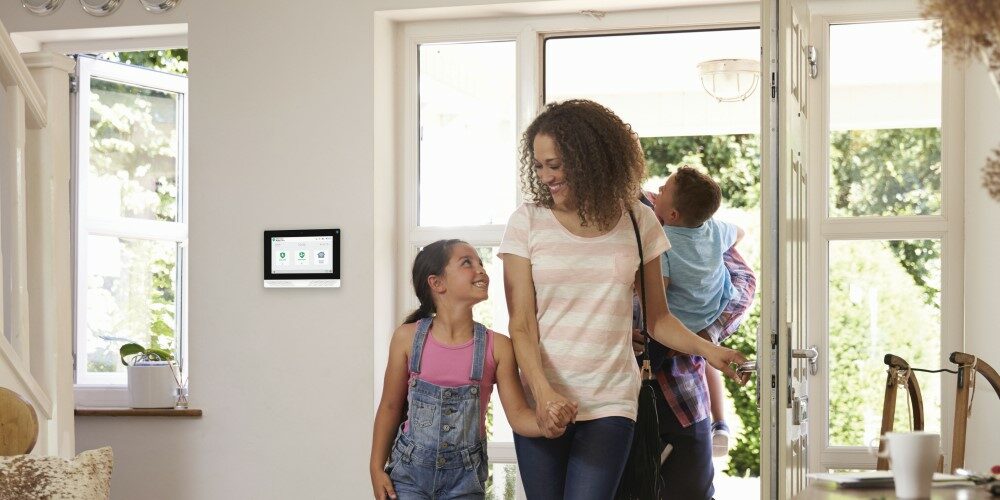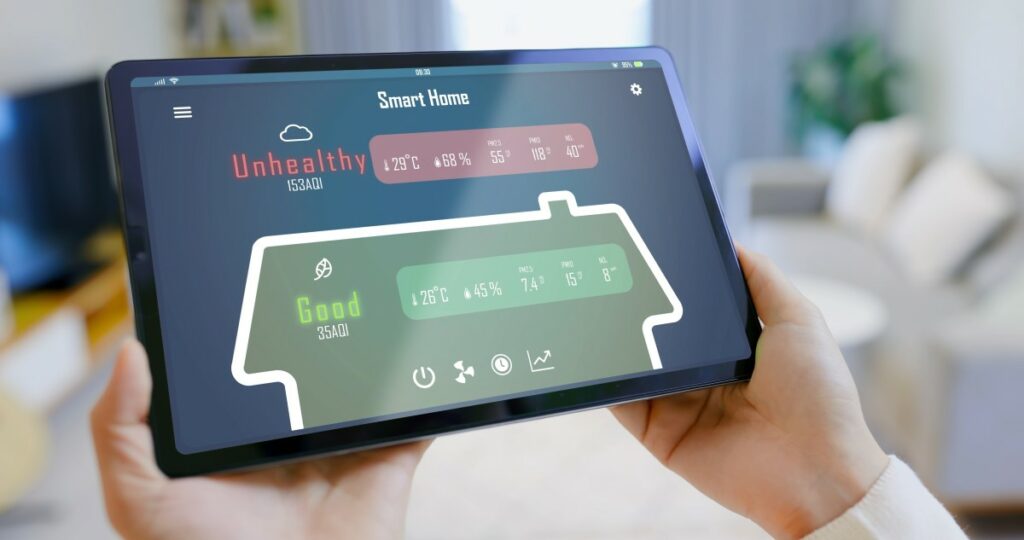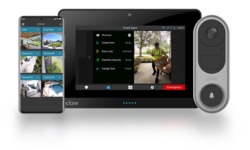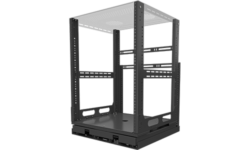How to Monitor a Home’s Wellness: Examining the Technologies
The health and wellness of a home has seen increased interest courtesy of the pandemic. Here’s how integrators can tie together a home’s disparate devices to allow the monitoring of utilities in one place.

(Image courtesy of 2GIG)
Your child suddenly has asthma. Your electricity bill is too high and you don’t know why. Little do you know, that the hot water tank you never see had a slow leak for years and now you have a huge mold problem that’s causing a myriad of other problems.
In the past, you dealt with it — or not — in other ways. You could bring your child to the doctor to diagnose what’s causing the symptoms. Once the doctor points to mold as the cause, you’d inspect your entire house for any signs of mold growth and remove it. If you don’t have the time to do that, you’d hire a professional to do that for you. When the culprit is found, time to call another professional to fix that leak or, if you have the skills, fix it yourself.
Now, technology can solve that problem for you and the cost of the tech or service is far less than the alternative. A water leak sensor installed near a hot water tank can send a notification to a smartphone once it detects water and even shut off the main valve to minimize damage. These days, a smart indoor air quality monitor can be used to detect harmful particles in the air and inform the homeowner through a smartphone notification.
The device can also communicate with a smart HVAC system, smart air purifier and a smart thermostat to enable an increase in airflow, neutralize any harmful particles in the air and manage temperatures around the house to prevent mold growth.
Such conveniences have been made possible thanks to systems integration, which enables different devices to connect with each other through various wired and wireless means and, thereby, create a network of devices that communicate with each other and use that exchanged information to perform actions for the benefit of the end user. Here’s how security dealers and integrators can take advantage of these technologies.
Integrating the Systems
Systems integration adoption accelerated in the past five years in response to consumer demand for devices within the home that work well with each other. While many devices within the home are already connected, the goal of solution providers is to make a home smart. Recent technological developments ensured better and broader integrations with other products and services within, making a smart home possible.
Integration can happen in two ways, the first being local integration. This is where devices within the home integrate with each other directly through some sort of open protocol like IP, Z-Wave, Zigbee and Bluetooth, to name a few.
The second is through Cloud-to-Cloud integration. Here, solutions providers publish documentation that enable each provider to interact with each other over the Internet — Matter being the latest standard to attempt to consolidate and simplify the integration process between device manufacturers and service providers.
What this means for a consumer is that an air quality sensor they picked up from Amazon, that can detect poor air quality, can be configured to automatically trigger their smart thermostat made by another company to turn on air circulation systems.
From an energy management perspective, the security system from vendor A, which knows when you are home or if the windows are open, can also tell your smart thermostat from vendor B to change your set points to not try to heat or cool an empty house or one with all the windows open.
In the words of ELAN Control Systems Vice President of Product Management Jeff Shaw, “The smart home of today is more than just a convenience; it has become a home management tool. A smart home system can now help manage, indoor air quality, energy usage, water leak detection and more. Devices across different manufacturers can interact with each other via a control system.”

A smart indoor air quality monitor can be used to detect harmful particles in the air and inform the homeowner through a notification on their device. (Image: ryanking999/stock.adobe.com)
COVID’s Impact on Home Health Systems
People pay attention to things they feel are of value, such as security, home health and personal health and wellbeing. As technology advances, and people become more aware of what is possible, they will seek out those things of value and demand that they all just work together to provide the full value of their investments.
This behavior manifested in the past two years with the acceleration of demand and adoption for systems integration brought on by lifestyle changes created by the COVID-19 pandemic. Recent technological developments such as 5G technology, WiFi 6 and 6E, and Bluetooth 5, to name a few, also enabled this growth.
The desire to have a healthy home environment while working and learning from home amid government-mandated lockdowns created new applications for systems integration, Internet of Things, and artificial intelligence-enabled home devices. Market researchers are also expecting this trend to continue even after the U.S. reopened and emerged from the pandemic this year.
For example, when it became evident in 2020 that SARS-COV-2, the virus that causes COVID-19, can spread through the air, the global demand for smart air purifiers with high efficiency air particulate (HEPA) filters skyrocketed, with its market now expected to expand to $4.71 billion by 2025, according to a report by Grand View Research.
Aside from smart air purifiers, other smart home devices that help monitor and promote home health such as smart thermostats, smart HVACs and smart sensors all saw robust growth amid the COVID-19 pandemic, all pulled by the demand for better systems integration to monitor and improve indoor air quality to prevent disease and create a more healthy living space.
Another factor that drove the growth in demand for integration-capable smart home devices is the desire to manage energy consumption at home. As more people spent time at home, homeowners noticed rising energy prices, their energy consumption, and for some, the impact of their energy consumption on the environment.
Hence, the increase in adoption of smart thermostats and smart HVACs that can monitor and manage indoor cooling, ventilation and heating from a smartphone application. Likewise, the global market for smart speakers, smart lighting, smart plugs, and smart meters also saw rapid growth in 2020 and are expected to grow even further in the coming years.
Some smart home owners have even gone further in energy management by sourcing some of their electricity from solar panels, which in recent years have become increasingly affordable and easy to adopt and integrate, leading to the ongoing growth of U.S. and global residential solar power market. The adoption of solar panels in smart homes have not only led to reduced cost due to decreased reliance on the main electricity grid, but it has also made the use of smart home devices in systems integration more energy efficient and sustainable.
What this means is that it would be cheaper to deploy systems integration in a home to monitor and manage home health using solar power compared to operating it using AC power from the grid. Moreover, it also increases the home’s market value due to its healthy environment, convenience and energy efficiency and sustainability.

A water leak sensor installed near a hot water tank can send a notification to a smartphone once it detects water and even shut off the main valve to minimize damage. (Image: Francesco Scatena/stock.adobe.com)
Smart Touch Panels Offer Control & Convenience
Amid the boom in systems integration during the COVID-19 pandemic, one of the prevailing stumbling blocks to its adoption is centralized monitoring and control for all the interconnected devices that ensure home health and well-being. While there are smart home ecosystems that are more complete than others, being able to give homeowner information and having the ability to interact on a device they already have is a key driver of adoption.
Provide value, then make it easy to extract that value, is a winning combination. Smart home touch panels and system controllers provide this winning combination to homeowners, dealers and integrators. These devices do away with having to download individual apps to monitor and control a small number of smart home devices, which can be inconvenient and cumbersome if the interface and user experience for each app differs depending on which device is being used.
Nowadays, there are smart home touch panels that provide a multiplatform experience by having a single user-friendly interface across different devices — whether it’s a smartphone, tablet, desktop or a manufacturer’s proprietary touch panel. There are even panels that provide a richer user experience through features such as facial recognition for access and security, voice recognition for voice control of connected smart home devices, and interface customization.
For system controllers, the value lies in its interoperability, connecting a large number of smart home devices both proprietary and third-party, as well as wired devices using Ethernet and USB and wireless devices of varying protocols such as cellular, WiFi, Bluetooth, Z-Wave and Zigbee to name a few. And there is still so much room for additional devices in a future expansion!
From a homeowner perspective, this could mean cheaper and easier adoption of home health system integrations. With this interoperability, a homeowner can be seated in their car on the side of the road on a hot summer day monitoring their children via the security camera footage from their home security camera, checking on the indoor temperature via a smart thermostat, turning off any lights to save energy, and creating automations for a smart HVAC to increase ventilation around 11 a.m. to 3 p.m. to give them a cooler environment — all from a single app on their smartphone or tablet.
From a sales perspective, what this means is a boon for dealers and integrators of smart home devices. With the sustained demand for smart home devices for home health systems integration in the post-pandemic era, dealers and integrators can continue to expect more purchases and installations from first-time homeowners and long-time smart homeowners who are looking to expand existing systems.
This also means a definite recurring monthly revenue from all the subscriptions to broader solutions that come with smart home automations. By offering these subscriptions, dealers can benefit from a higher monthly fee and/or having a customer for a longer period of time.
The Challenges That Remain
While the demand for better systems integration amid the COVID-19 pandemic saw growth in various markets for smart home devices, not all markets experienced this increase, as some markets also saw a slump in sales brought on by various challenges.
One case in point is the demand for in-door air quality monitoring products that took a huge hit during the COVID-19 pandemic, with the market experiencing a slump in 2020 due to supply chain disruptions caused by government-mandated lockdowns. Nevertheless, the industry is still being forecasted to grow from $4.86 billion in 2020 to $8.33 billion in 2028 at a CAGR of 7.5%, according to Fortune Business Insights, as manufacturing catches up to demand during the post-pandemic period.
Challenges for the systems integration market also remain during the post-pandemic era. The high cost of some smart home devices make it a luxury that only the middle to upper-class income groups can afford. With inflation and rising costs of raw materials, it could impact the purchasing power of these income groups and threaten to restrict market growth.
The increasing sophistication of cyberattacks also pose a threat to the security and privacy of smart home devices and could potentially affect sales. Additionally, the slow pace of adoption of interoperability for some manufacturers of smart home devices hinders inter-brand system integration and could dampen sales and growth for the industry.
Amid these challenges, smart home devices and systems integration have nowhere to go but up. At this point in time, there is very little left within or around the home that cannot be detected or measured. Combine that with a system that can either take action — like turning on an air cleaner or turning off a water main — as well as the ability to notify the homeowner, you really start to move from just a connected home to a truly smart home. Now is the time to offer these solutions to give your customers a domestic life that’s not just intertwined, but also intuitive.
Quinto Petrucci is Security Vice President of Product Management for 2GIG.
If you enjoyed this article and want to receive more valuable industry content like this, click here to sign up for our FREE digital newsletters!

Security Is Our Business, Too
For professionals who recommend, buy and install all types of electronic security equipment, a free subscription to Commercial Integrator + Security Sales & Integration is like having a consultant on call. You’ll find an ideal balance of technology and business coverage, with installation tips and techniques for products and updates on how to add to your bottom line.
A FREE subscription to the top resource for security and integration industry will prove to be invaluable.







